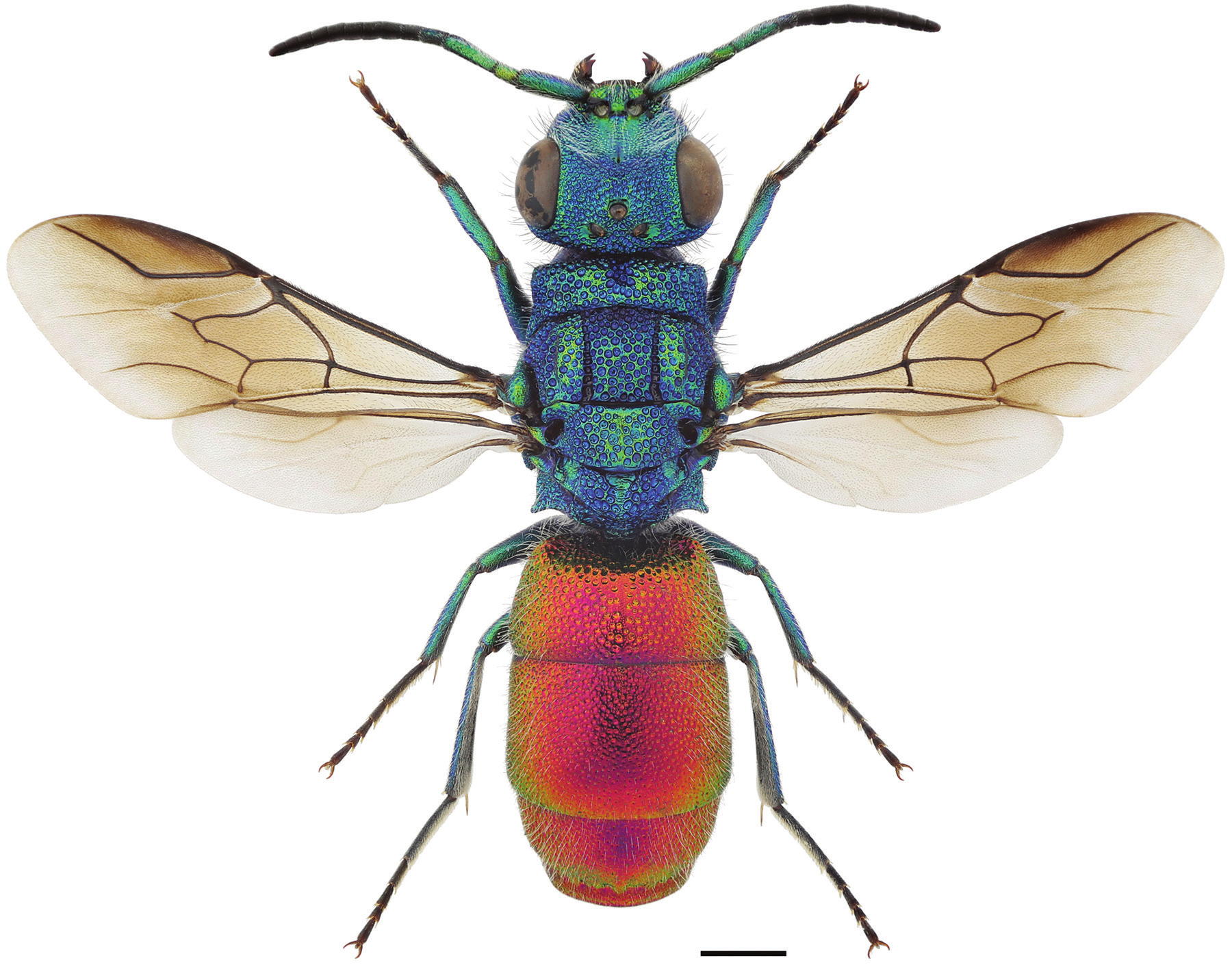Chrysura
Diagnostic characters of this genus include the nearly flat and densely punctate frons, the lack of a transverse frontal carina (Figs 201, 202), and the long malar space. Usually the mandible is also toothed subapically (Fig. 202), the proximal flagellomeres of the male are swollen ventrally (Fig. 204) and the pronotum is shorter than the mesoscutellum. The radial cell of the forewing is closed and the posterior margin of T3 is rounded without apical teeth (Figs 206–208). Chrysura is the second largest genus in the tribe Chrysidini. It includes 117 valid species, of which 106 are distributed in the Palearctic Region (Kimsey and Bohart 1991, Rosa and Lotfalizadeh 2013). The hosts consist of solitary bees of the family Megachilidae. The European fauna includes 50 species and several subspecies (Rosa and Soon 2012). Five species have been recorded in the Nordic and Baltic countries (Paukkunen et al. 2014). Species-groups below follow Kimsey and Bohart (1991).


